19 Vintage Household Items That Are Hard To Find Today
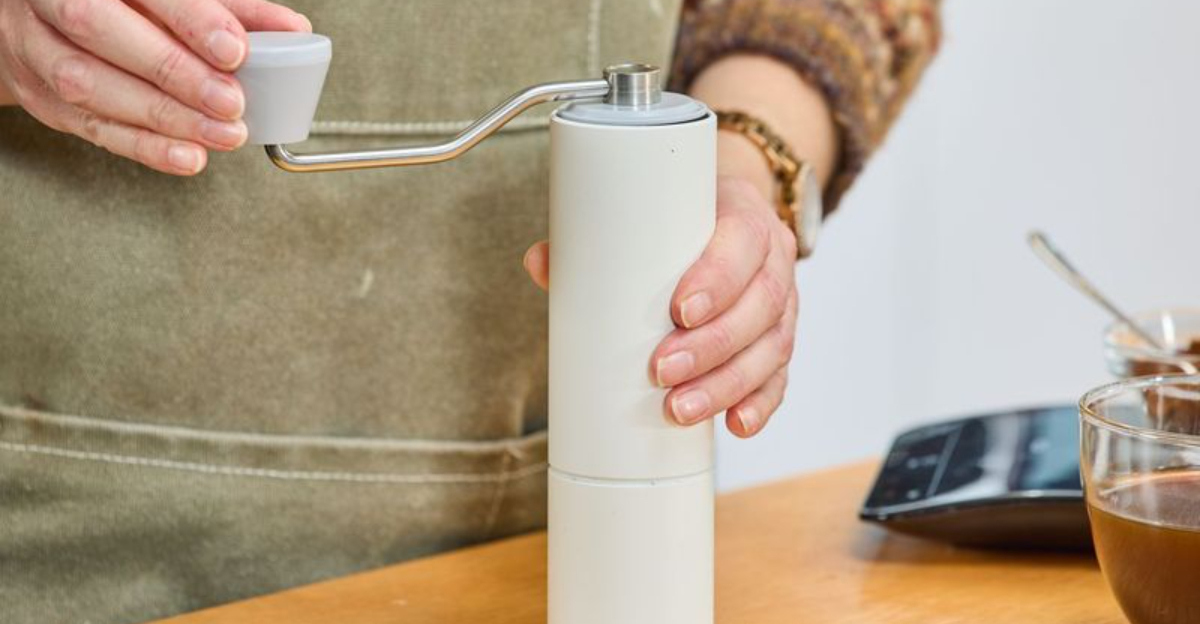
Remember walking into Grandma’s house and being instantly greeted by the sight—and sometimes the hum—of quirky gadgets and curious contraptions that somehow made her life simpler?
From avocado green kitchen tools to strange yet fascinating cleaning devices, these little treasures seemed like magic back then. Recently, while cleaning out my parents’ attic, I stumbled upon a forgotten collection of these old-school household items.
Holding them brought back a flood of childhood memories—moments spent watching, learning, and marveling. These charming relics from a bygone era have mostly vanished from today’s modern homes, replaced by sleek digital alternatives or left behind as our daily routines evolved.
Yet, each item tells a story of a different time, when life felt just a bit slower and more hands-on.
1. Rotary Dial Telephones
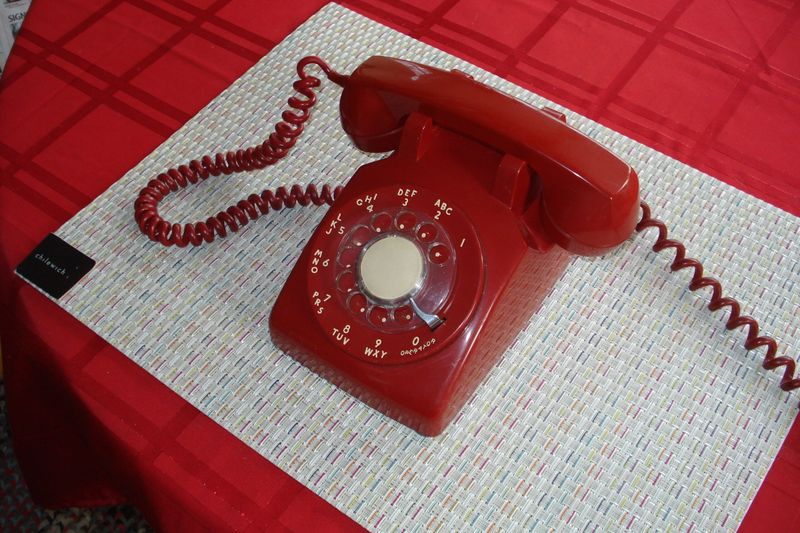
My fingers still remember the satisfying circular motion of dialing my best friend’s number on our avocado-green rotary phone.
Each digit required patience as the dial spun back with its distinctive whirring sound. These clunky communication devices were once the centerpiece of every home, often mounted on kitchen walls or sitting proudly on special telephone tables in hallways.
Kids today would be mystified by the absence of texting capabilities! Finding a working rotary phone now usually means scouring antique shops or estate sales, where they’ve morphed from essential technology into nostalgic decorative pieces that rarely connect to modern phone lines.
2. Butter Churns
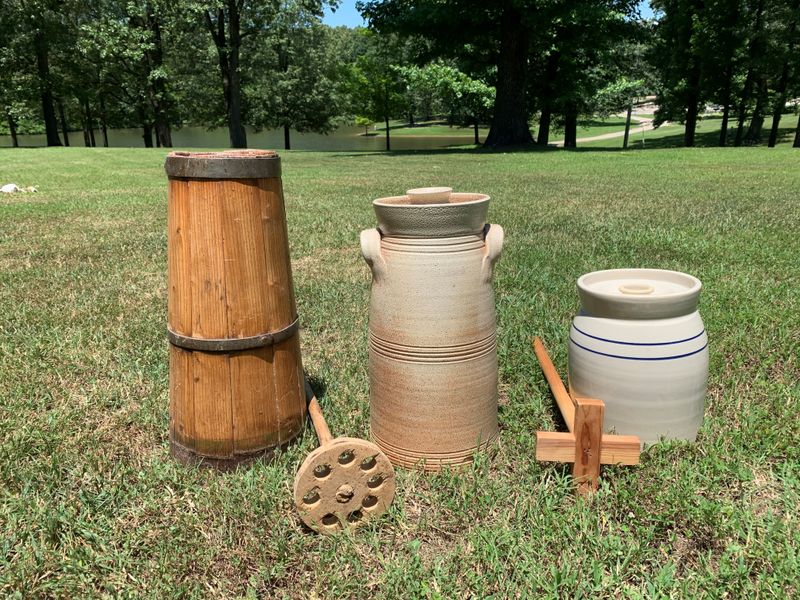
Butter-making was once a weekly ritual in my grandmother’s farmhouse kitchen. She’d fill the wooden churn with fresh cream and work the plunger up and down until—like magic—butter appeared.
These cylindrical wooden vessels with their long handles transformed cream into butter through sheer elbow grease. The rhythmic splashing sound would fill the kitchen for nearly an hour until the fatty solids separated from the buttermilk.
Modern supermarkets have made butter churns obsolete, relegating them to museum displays and rustic home decor. Yet nothing compares to the taste of freshly churned butter spread on warm bread—a flavor experience that’s becoming increasingly rare.
3. Ice Boxes
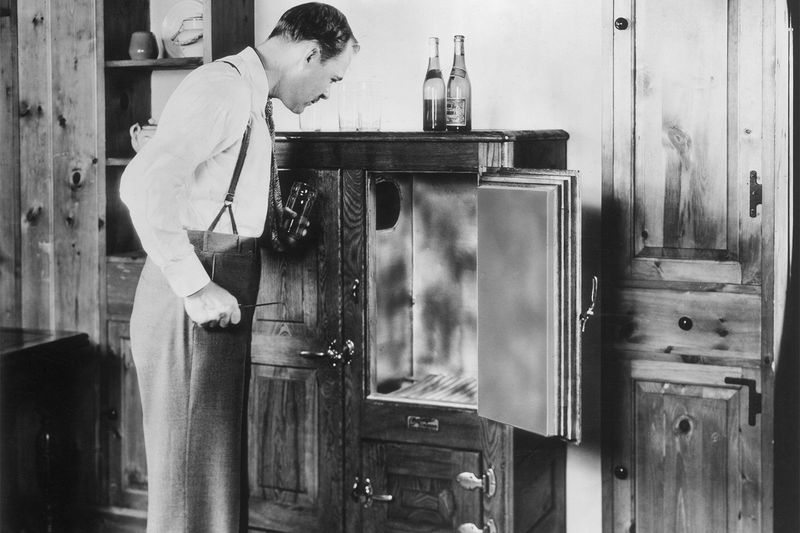
“Don’t leave the ice box open!” My grandfather would holler this whenever I’d stand mesmerized by the block of ice slowly dripping inside our summer cabin’s wooden cooling cabinet.
Before electric refrigerators became household staples, these insulated wooden cabinets kept food cool using large blocks of ice delivered by the neighborhood iceman. A metal-lined compartment held the ice, while shelves below stored perishables.
The constant maintenance—emptying drip pans, scheduling ice deliveries, and managing melting rates—made them labor-intensive. Today’s collectors prize these handcrafted pieces for their beautiful oak exteriors and brass hardware, repurposing them as unique liquor cabinets or decorative furniture.
4. Carpet Beaters
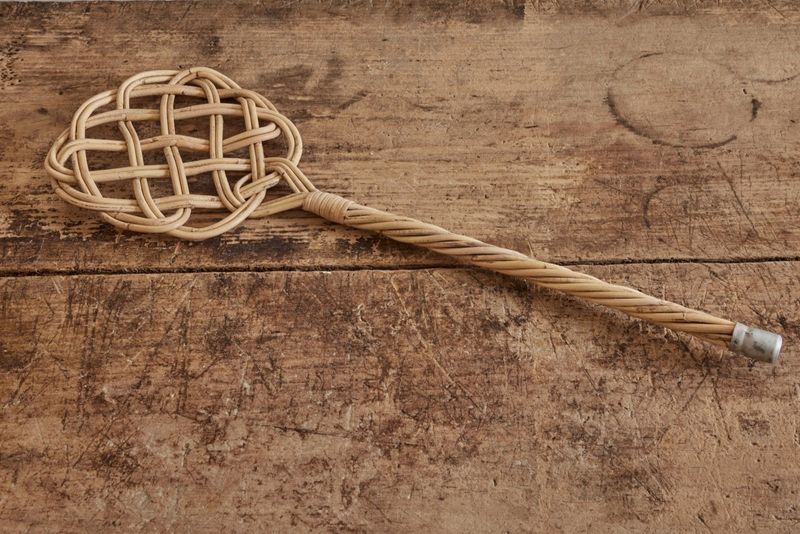
Whack! The distinctive sound of spring cleaning still echoes in my memory as Mom hung our rugs on the clothesline and attacked them with her wicker carpet beater. Dust clouds would erupt with each satisfying thwack!
These wickerwork tools, shaped like oversized tennis rackets with intricate patterns, were household cleaning essentials before vacuum cleaners became commonplace. Housekeepers would drag heavy rugs outside, hang them over clotheslines or porch railings, and beat the dust out of them.
While modern cleaning methods are certainly less labor-intensive, I’ve kept Grandma’s old carpet beater hanging on my wall—a decorative reminder of the elbow grease once required for housekeeping.
5. Washboards

Knuckles raw and red, that’s my first memory of helping Grandma do laundry on her old zinc washboard. The rhythmic scrubbing motion turned grimy work clothes into something presentable again. These ridged metal or glass boards set in wooden frames were the washing machines of their day.
Women would kneel beside washtubs, dip garments in soapy water, and vigorously rub them against the corrugated surface to loosen dirt and stains.
While you might spot washboards decorating country-themed restaurants or repurposed as musical instruments in jug bands, their original purpose has been happily replaced by the convenience of modern washing machines.
6. Oil Lamps

Power outages at my childhood home meant one thrilling thing: Dad would retrieve the kerosene lamps from the basement, filling our living room with dancing shadows and the distinctive smell of burning oil.
These glass vessels with their fabric wicks and adjustable flames were once the primary source of evening illumination in homes across America. Families would gather around their gentle glow for reading, sewing, or conversation as darkness fell.
Though some modern homes keep decorative oil lamps for emergency power outages or ambiance, finding the proper fuel, replacement wicks, and glass chimneys has become increasingly difficult as these once-essential items fade into nostalgic obscurity.
7. Darning Eggs
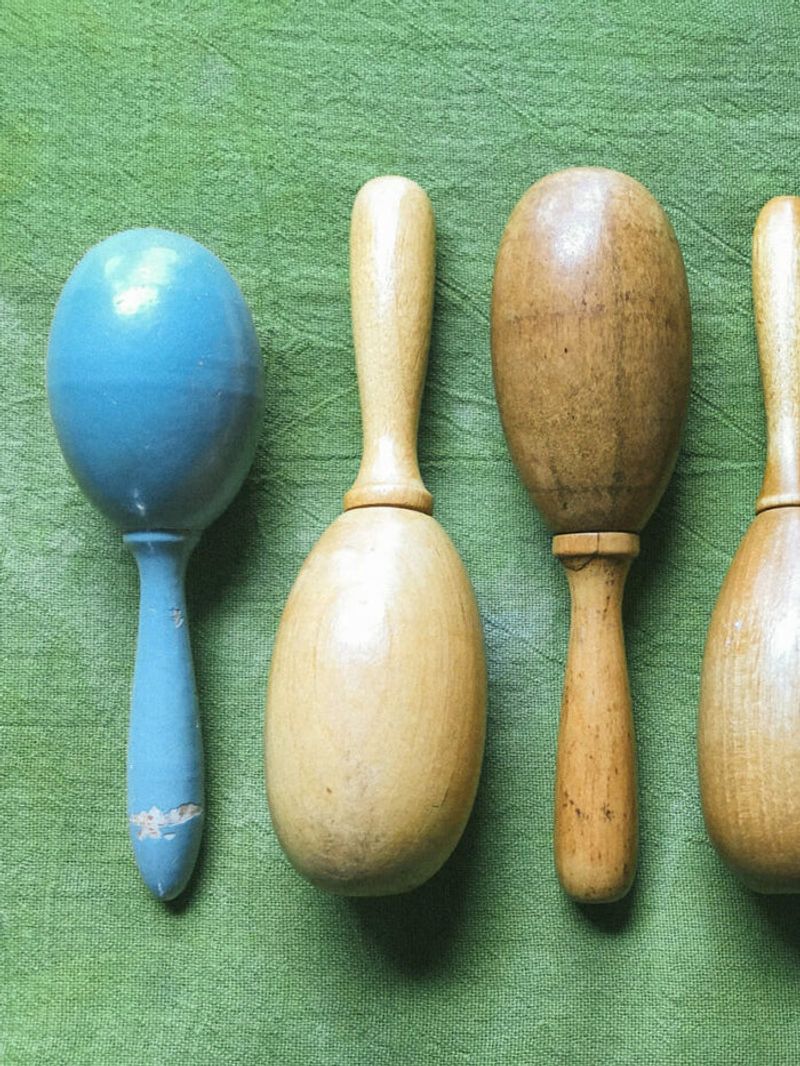
Grandma’s wooden darning egg always reminded me of an avocado with a handle. She’d slip this smooth, polished tool inside a sock, transforming a hole into an intricate web of thread that extended the garment’s life for months.
These wooden or porcelain implements, shaped like eggs with handles, provided a firm surface underneath holes in socks or other garments. The curved shape maintained the proper tension while the seamstress wove threads back and forth to close the hole.
In our throwaway culture, the art of darning has nearly disappeared. Finding these specialized mending tools now typically requires hunting through antique stores, where they’re often misidentified as unusual kitchen implements.
8. Hand-Cranked Clothes Wringers
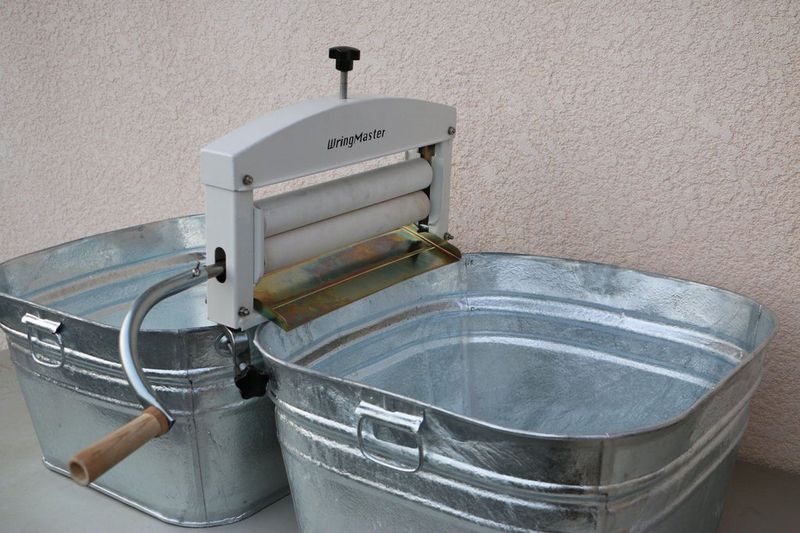
Squeaky metal and dripping water—the soundtrack of laundry day when I visited my great-aunt’s farmhouse as a child. She’d feed wet clothes through two rolling pins, cranking the handle to squeeze out excess water before hanging them on the line.
These mechanical devices featured two tightly-set rubber rollers mounted on a frame that could be attached to washtubs. Turning the crank rotated the rollers, pressing water from freshly washed clothes and speeding drying time.
Modern washing machines with spin cycles have made these labor-saving devices obsolete. The few remaining examples usually reside in historical museums or have been repurposed by crafters who use them to press water from handmade paper.
9. Treadle Sewing Machines
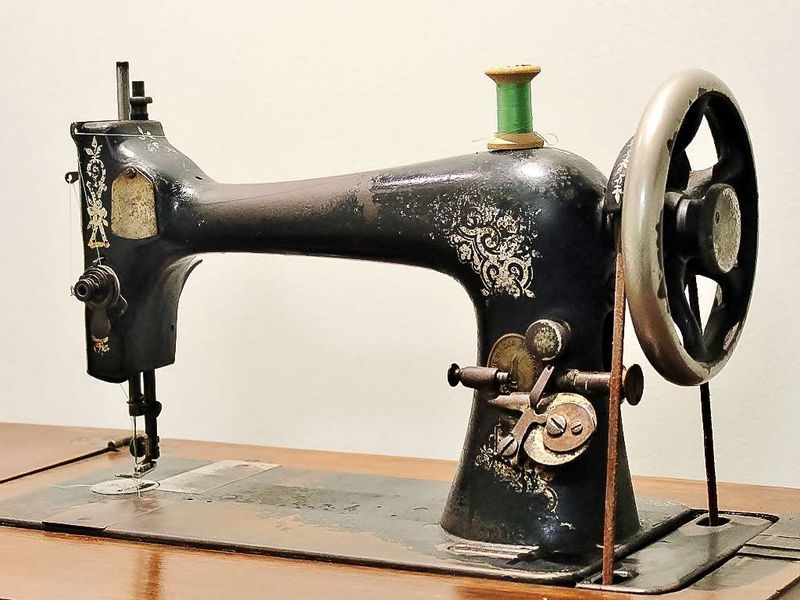
The hypnotic rhythm of my grandmother’s foot pumping the wooden pedal beneath her Singer sewing machine lulled me to sleep many afternoons. No electricity required—just the steady motion of her foot powering the needle through fabric.
These ingenious machines operated through a foot-powered mechanism that transferred energy from the treadle (foot pedal) to the needle via a belt system. Seamstresses could achieve remarkable speed and precision once they mastered the coordination required.
While collectors treasure these beautiful machines with their ornate cast iron bases and wooden cabinets, finding replacement parts or someone who can repair them has become increasingly challenging as the mechanical knowledge fades with each passing generation.
10. Stereoscopes
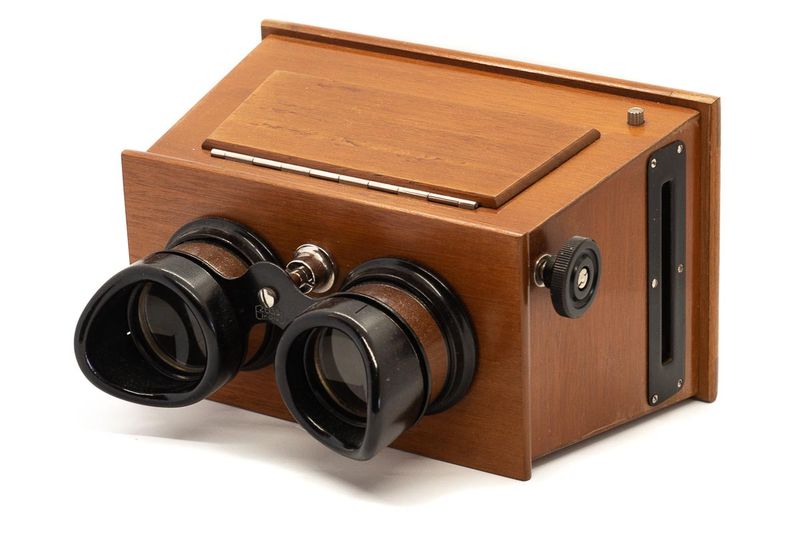
Saturday afternoons at my great-grandfather’s house always included viewing his collection of stereoscopic cards. I’d press my face against the wooden viewer, suddenly transported to three-dimensional scenes of faraway places.
These handheld devices with their twin eyepieces allowed viewers to see specially photographed double images as single three-dimensional scenes. Popular from the 1850s through the early 1900s, they were the Victorian equivalent of virtual reality—bringing exotic locations and historical events into middle-class parlors.
Digital entertainment has rendered stereoscopes obsolete, though collectors still seek out both the viewers and the photographic cards. The simple technology created a surprisingly immersive experience that even today’s tech-saturated kids find fascinating.
11. Mechanical Coffee Grinders
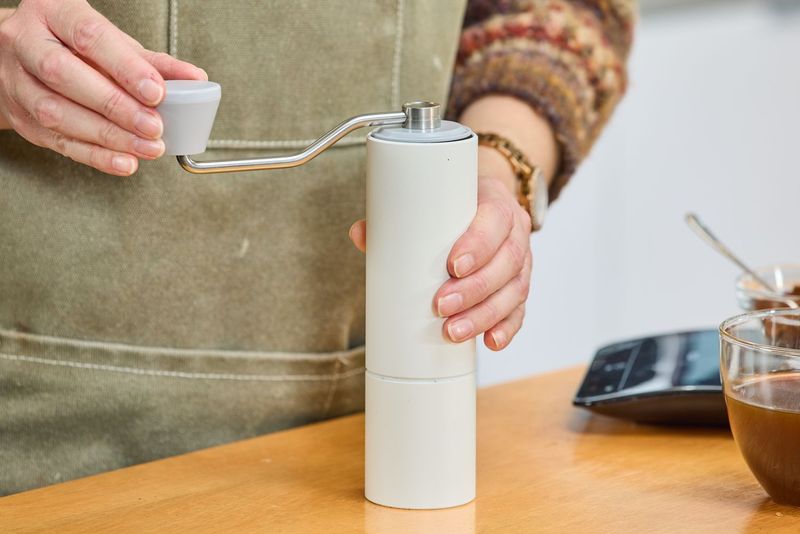
Cranking the handle of Dad’s wall-mounted coffee grinder was my weekend morning job. The satisfying crunch of beans and the emerging aroma created a sensory ritual that modern pod machines can’t replicate.
These cast-iron contraptions with their wooden drawers and brass fittings were kitchen staples for generations. Coffee lovers would load whole beans into the top hopper, turn the crank, and collect freshly ground coffee in the drawer below, adjusting the grind size with a small screw mechanism.
While electric grinders have largely replaced these manual versions, some coffee enthusiasts still seek out restored antique grinders. They prize the ability to precisely control grind consistency and the pleasure of the hands-on coffee preparation process.
12. Phonograph Record Players
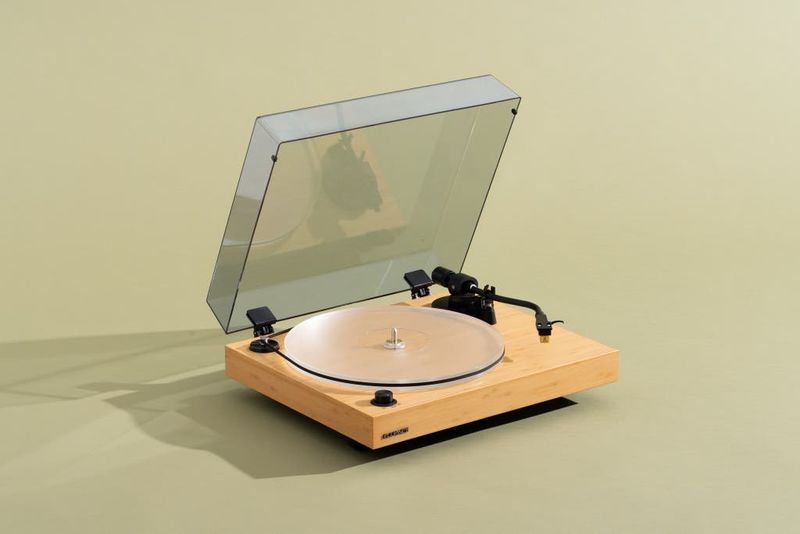
The scratchy prelude before music emerged from my father’s hand-cranked Victrola was pure magic to my young ears. He’d carefully place the heavy needle on spinning shellac discs, releasing tinny but enchanting melodies into our living room.
These early music players used no electricity, relying instead on manual winding to power the turntable. Sound was amplified acoustically through the iconic horn speaker, without any electronic assistance.
While vinyl records have enjoyed a renaissance among audiophiles, these purely mechanical music players with their morning-glory horns and wind-up mechanisms have largely disappeared. The few remaining examples typically reside in museums or specialized collections of early sound technology.
13. Manual Typewriters
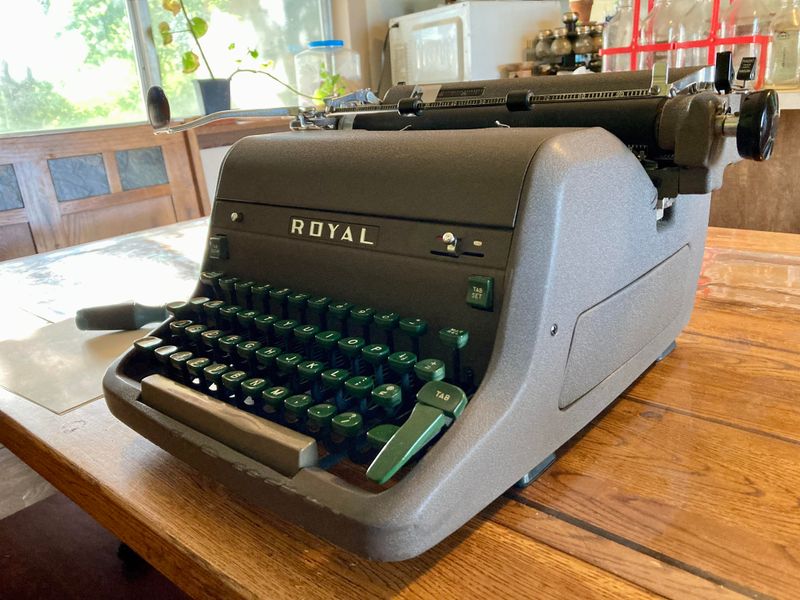
Clack-clack-DING! My first stories were hammered out on my mother’s baby-blue Smith Corona that lived in our attic. Each keystroke required deliberate pressure, and mistakes meant retyping entire pages. These mechanical writing machines, with their intricate systems of levers, springs, and typebars, revolutionized written communication before computers came along.
Writers would strike keys that swung metal type hammers against an inked ribbon, transferring letters onto paper rolled around a cylinder.
Though prized by collectors and a few dedicated writers who appreciate their distraction-free simplicity, finding typewriter ribbons and repair services has become increasingly difficult. What was once essential office equipment now serves primarily as nostalgic decor.
14. Bread Boxes
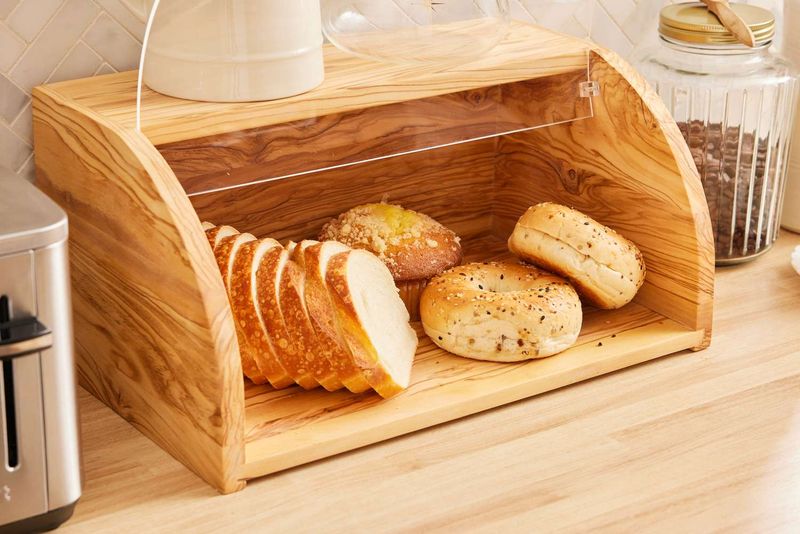
The squeaky hinged lid of Mom’s ceramic bread box announced my after-school snack raids. That humble container somehow kept homemade bread fresh for days in our humid kitchen. These specialized storage containers—made of wood, metal, ceramic, or plastic—were designed to maintain optimal humidity levels for bread.
Ventilation holes prevented mold while the enclosed space kept bread from drying out too quickly, extending freshness in the days before preservative-laden commercial breads.
Modern kitchens increasingly forego dedicated bread storage as pre-sliced, plastic-wrapped loaves became the norm. While some artisanal bakers are reviving bread boxes for their homemade sourdough, these once-ubiquitous containers have largely disappeared from countertops.
15. Flour Sifters
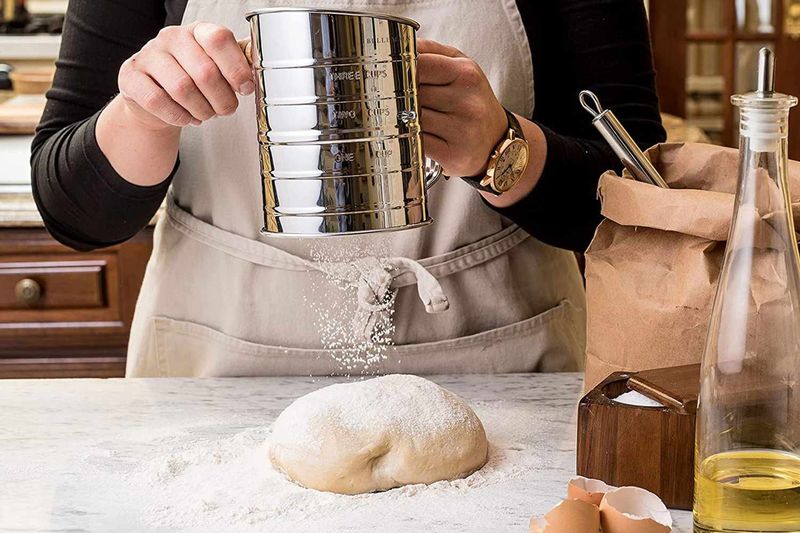
Squeak-squeak-squeak—the sound of Grandma’s hand-cranked flour sifter signaled that cookie-making was underway! I’d watch, mesmerized, as fine white powder cascaded through the mesh screen.
These cylindrical metal tools with hand cranks or squeeze handles forced flour through a fine mesh screen, aerating it while removing lumps. Serious bakers considered sifting essential for achieving light, fluffy baked goods before commercially sifted flour became standard.
While professional bakers still use industrial sifters, the household versions with their distinctive red wooden knobs or green handles have largely disappeared from home kitchens. Modern recipes rarely call for sifted flour, making these specialized tools seem fussy and unnecessary to contemporary cooks.
16. Icepick and Tongs
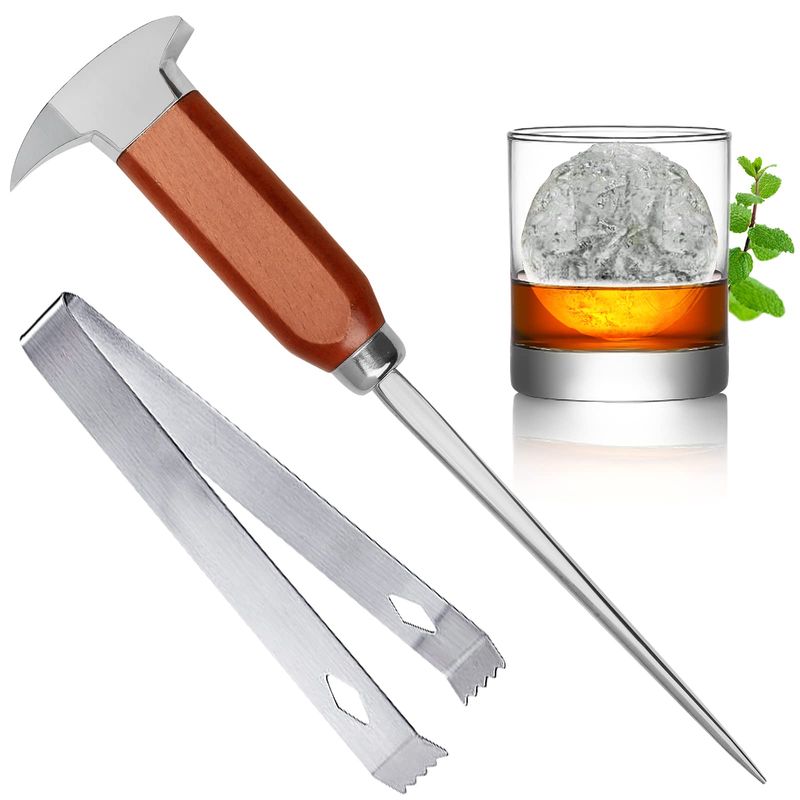
Watching my grandfather skillfully wield his brass-handled icepick was both terrifying and fascinating. With a few expert jabs and a quick grab with the tongs, he’d extract the perfect ice chunk for our lemonade.
These specialized tools were essential when homes received ice in large blocks that needed breaking down for daily use. The sharp metal pick with its wooden or brass handle would chip away manageable pieces, while the accompanying tongs safely transferred ice chunks to drinks or ice boxes.
Modern refrigerators with automatic ice makers have rendered these implements obsolete. Finding authentic ice tools now typically requires searching antique shops, where they’re often misidentified or sold to cocktail enthusiasts who’ve repurposed them for craft beverage preparation.
17. Potato Ricers
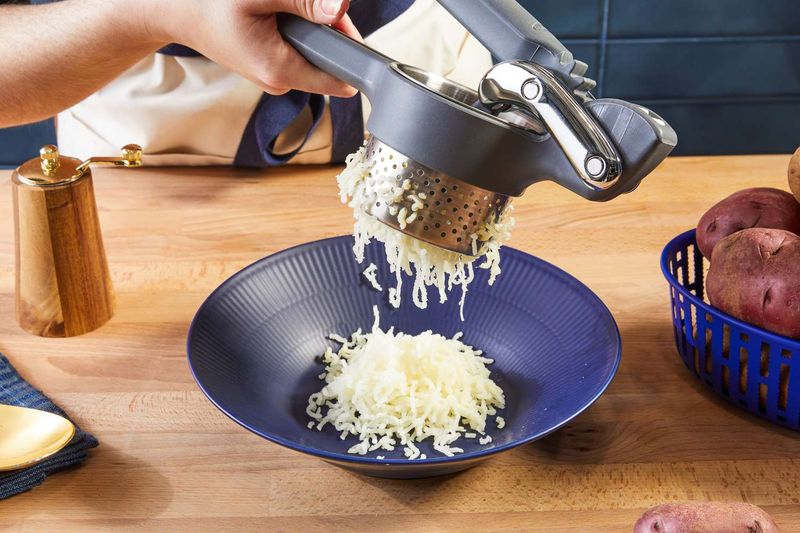
Holiday mashed potatoes at Aunt Edith’s house meant watching her strong arms press cooked potatoes through her ancient metal ricer. The resulting strands would fall like potato spaghetti into the waiting bowl below.
These hand-operated presses featured a perforated basket and lever mechanism that forced cooked potatoes through tiny holes. The process created fluffier, lump-free mashed potatoes compared to traditional mashing methods.
While professional chefs still use ricers for the smoothest purees, many home cooks have abandoned these single-purpose tools in favor of food processors or electric mixers. The distinctive metal presses with their wooden handles are increasingly relegated to vintage kitchen displays rather than active use.
18. Milk Bottles with Cream Tops

Racing to be first to the delivered milk bottles meant getting dibs on the cream that had separated at the top! I’d carefully pour that rich goodness over my cereal before anyone else could claim it.
These iconic glass bottles with their distinctive shapes and embossed dairy names were the standard for milk delivery until the 1960s. The non-homogenized milk naturally separated, allowing cream to rise to the wide-mouthed top for easy skimming.
While some specialty dairies have revived glass bottle delivery for environmental reasons, finding traditional bottles with the wider tops designed for cream separation has become nearly impossible. Modern milk processing homogenizes the fat content, eliminating the cream-top experience entirely.
19. Mechanical Alarm Clocks
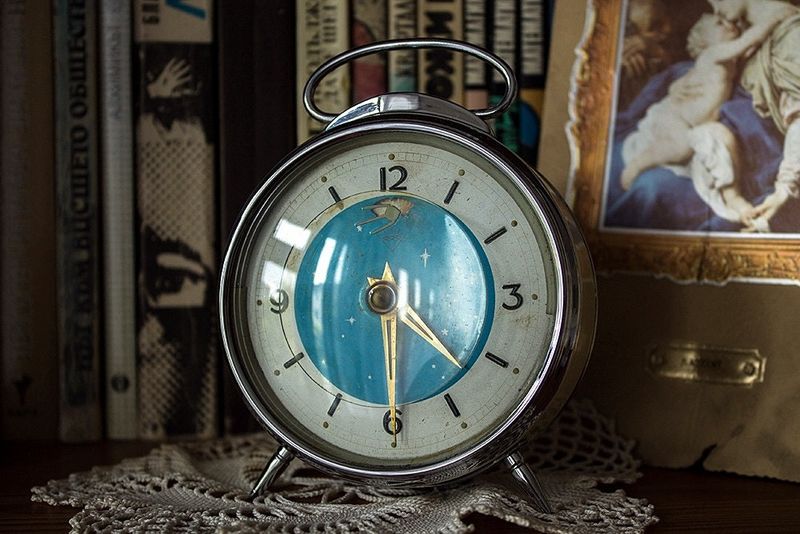
BRRRRING! The heart-stopping jangle of my grandfather’s wind-up alarm clock could wake the dead—or at least a teenager determined to sleep until noon. That brass monstrosity required daily winding but never failed its duty.
These fully mechanical timepieces operated through an intricate system of gears, springs, and bells that required no electricity. Users would wind the mechanism with a key, set the alarm hand, and trust the gradually releasing spring tension to keep accurate time until the next winding.
Digital alarms and smartphone wake-up calls have largely replaced these reliable machines. The distinctive ticking sound and twin-bell ring that once punctuated household mornings has fallen silent in most homes.
